Field report Internet on board (nearshore)
Who hasn’t experienced this: as soon as the port of destination comes into view, the first mobile phones are pulled out and e-mails are checked, messages exchanged and mooring options, restaurants, shopping facilities and transport connections of the port of destination are checked out. So far, so good, so individual. For nowadays, most people have a SIM card contract with roaming capability. And in this respect, everyone can be happy as he or she pleases, if and as long as he or she has a network. As a skipper, I don’t have to care, and I don’t have to like it.
It gets demanding when the first people in the harbour want to download or upload large amounts of data. Suddenly, the individual mobile phone contract is no longer so suitable, but rather port WLAN is the order of the day. If it were available, which is often not the case. Sometimes the harbour WLAN is not accessible, sometimes it is too slow because it is overloaded, sometimes you have to go to certain places near the harbour WLAN router to get a connection at all. Then, at the latest, the skipper is bombarded with questions and complaints and ideas on how to solve the problem of internet access.
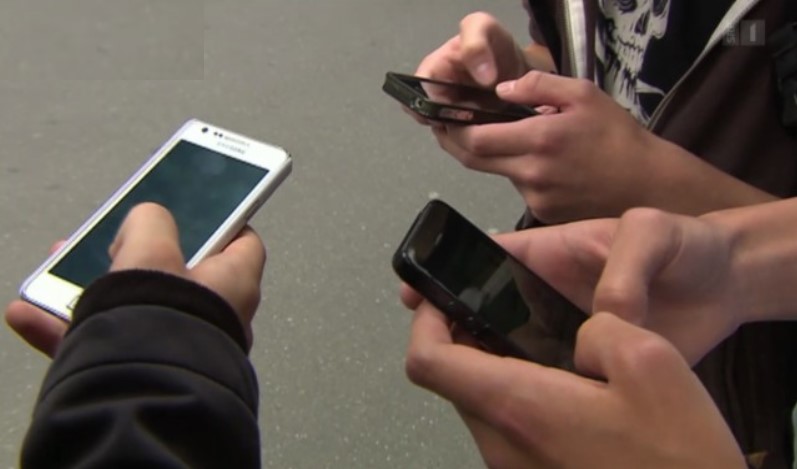
In times of increasing home office possibilities and job-related availability expectations, but also in view of possible downloads of chart, operating system and driver updates and weather data, even the skipper is beginning to see a high and reliable bandwidth in the harbour as a pleasant framework condition. Especially for weather data and unavoidable calls, an internet connection up to 20 nm from the coast can be quite interesting and desirable.
And yes, even on a relaxed sailing holiday with a small crew, holiday videos and pictures want to be posted and sent whenever possible. And of course, one or the other series should also be streamed and a lot of research done.
So what is needed to satisfy all these modern and mostly unpostponable needs? Ideally, internet access via an on-board WLAN, into which the user logs on once and then has continuous access to the internet as long as access via WLAN or LTE mobile network is available on board. This means that every guest who comes on board can log on to the on-board WLAN once and has immediate and continuous internet access as long as the on-board system in turn has access, either via the port WLAN or via the mobile network. Since the router and WLAN or radio network antennas on board have a considerably higher range than the individual devices of the guests, the internet availability and thus the perceived comfort for all increases.
What can a technical implementation look like in detail?
The central element is a WLAN- and mobile radio-capable router, like in my case a Teltonika RUT950 – LTE WLAN router.
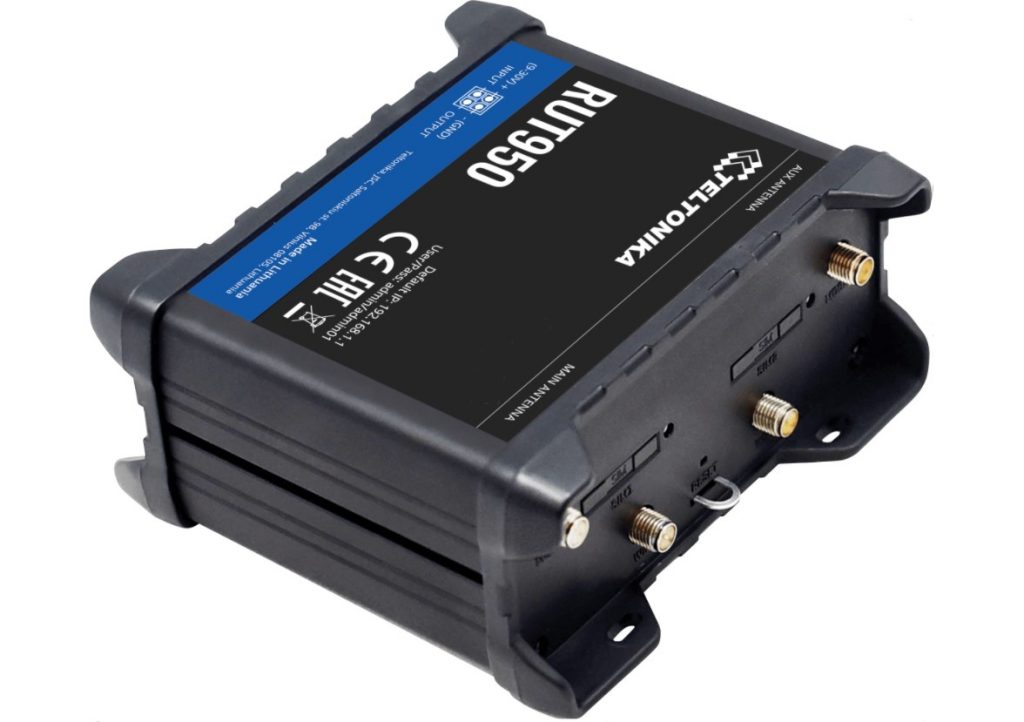
This is a robust LTE router designed for industrial applications that can cope with wide temperature ranges and high humidity up to 90%. The connectivity redundancy through dual-SIM failover enables seamless switching to the best available wireless network (which of course then also requires 2 SIM cards for different networks). A similar failover functionality with adjustable prioritisation enables automatic and seamless switching between available WLAN (e.g. port WLAN) and mobile network (if port WLAN is too slow or not available). WiFi transmits at 20dBm. Redundant antenna connections make it possible – in addition to the antennas mounted directly on the router – to use additional external antennas in an optimal signal position and thus significantly increase the range.
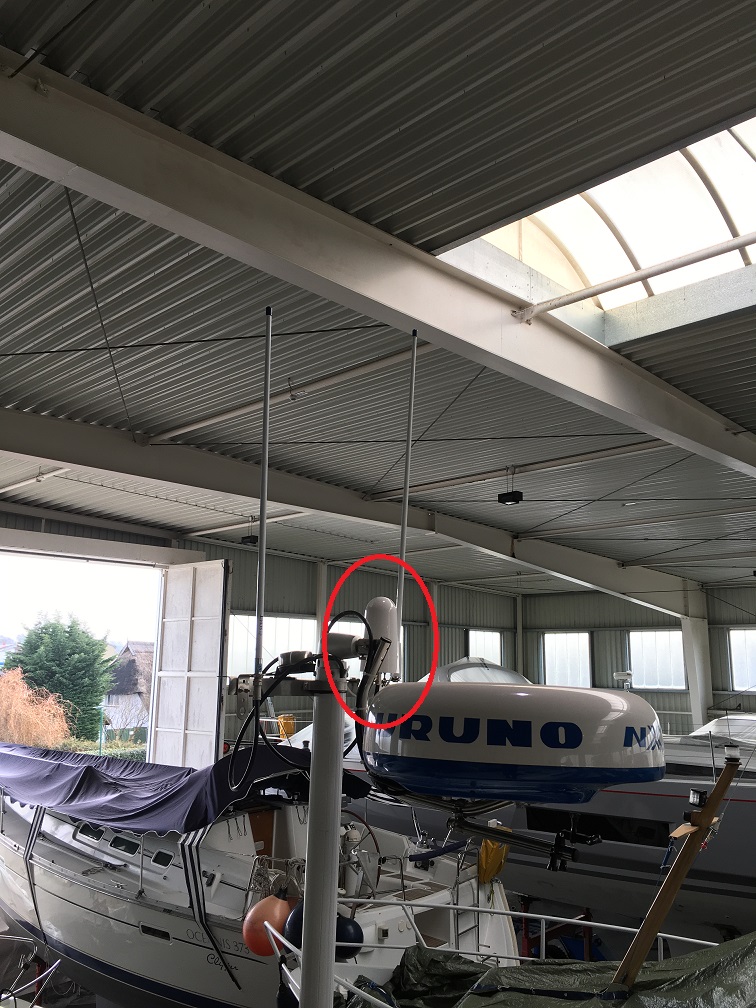
Appropriate antennas, which are optimally aligned to WLAN or mobile radio frequencies, are available from the relevant specialised trade.
Circled in red in the picture above is the deployed Scout Sea-Connect broadband antenna for the mobile network with coverage for 3G/4G/LTE and WLAN systems in a compact and waterproof design with 4 dBi gain.
The WLAN and LTE antennas are connected to small adapter cables with N plugs, which in turn are connected to the router via SMA plugs or sockets. The connection cables between antennas and router should not be much longer than 5 m, because otherwise too much signal strength is lost due to the exponentially increasing signal attenuation.
For this reason, I have mounted the router in a protected place in the back box at the stern, as the antenna mast is at the stern and this gives me a cable length of just under 5 metres.
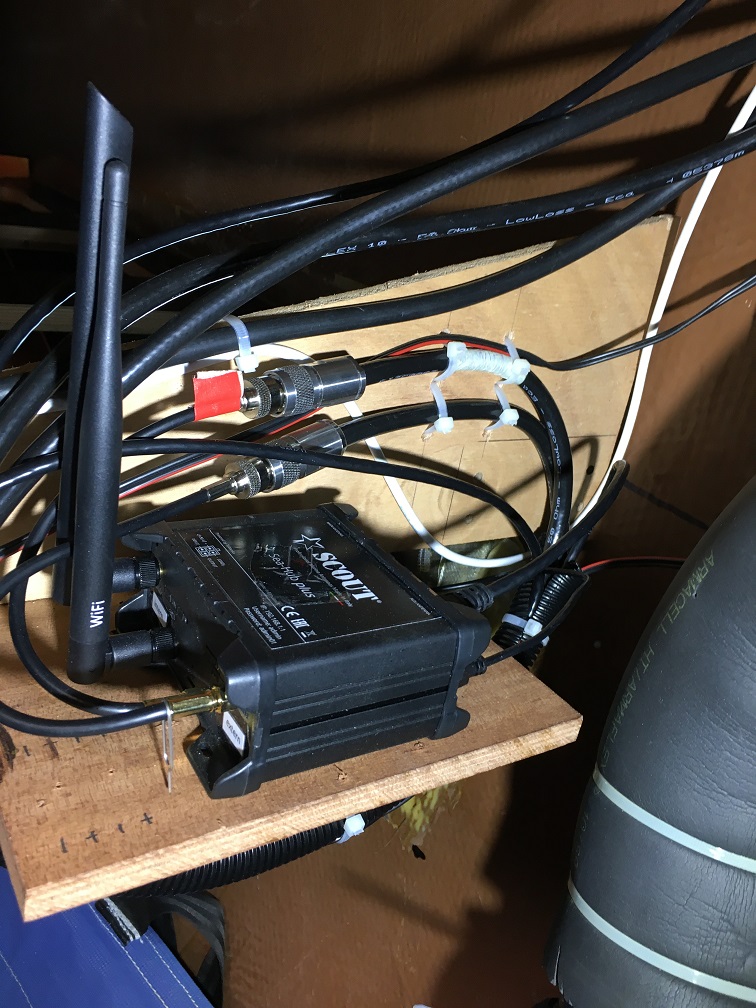
In the mobile network, it goes up to 4G (LTE) – KAT4 up to 100 MBit/s, in WLAN – up to 300 MBit/s. In addition, 4 Ethernet ports are available, via which an on-board LAN distributor can be displayed.
The router can be supplied directly with 12 V voltage via a suitable connection cable.
After the SIM card has been inserted, you are ready to go. To configure and administer the system, software is available that is called up via the IP address of the router.
The first action to be taken when calling up the router for the first time is to change the default administrator password assigned by the manufacturer, because otherwise external persons could easily gain access to the router.
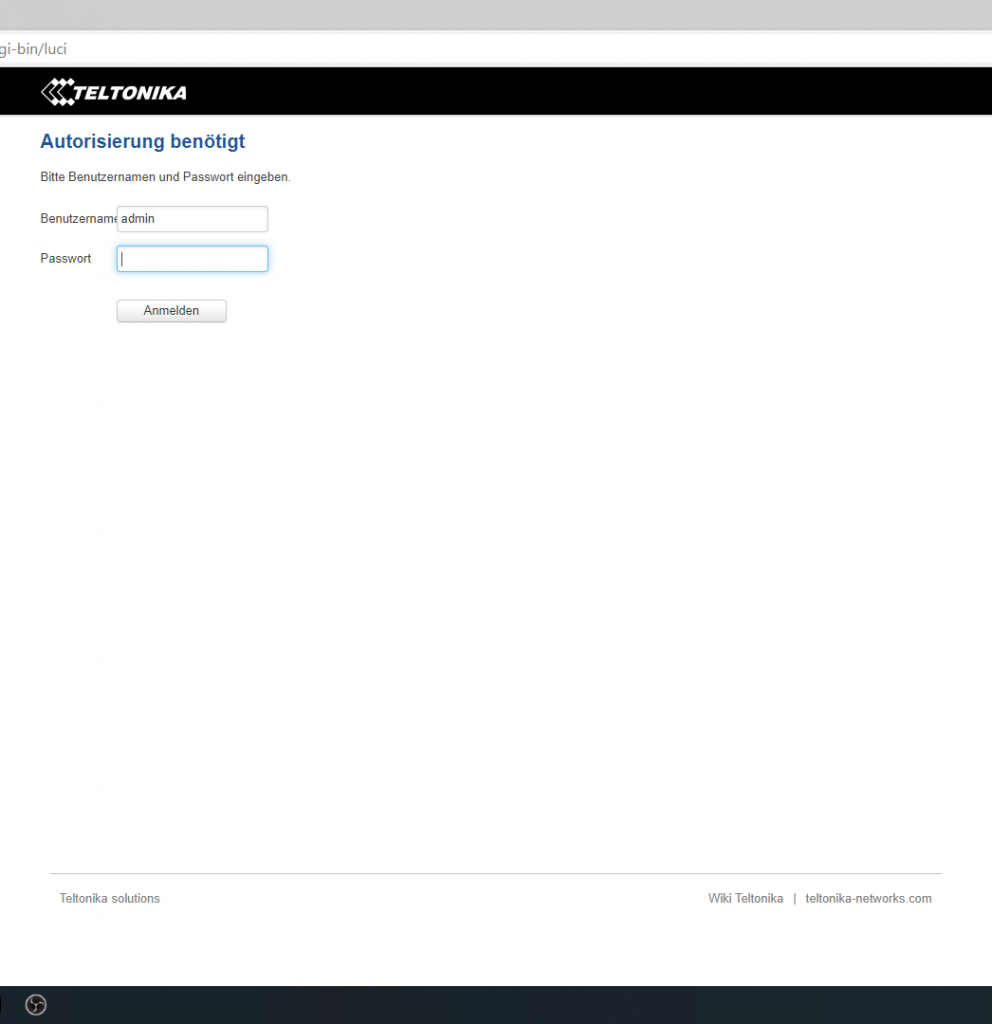
If the SIM card requires a PIN to be entered for activation, now is the right time to do this. The SIM card configuration can be used for this purpose.
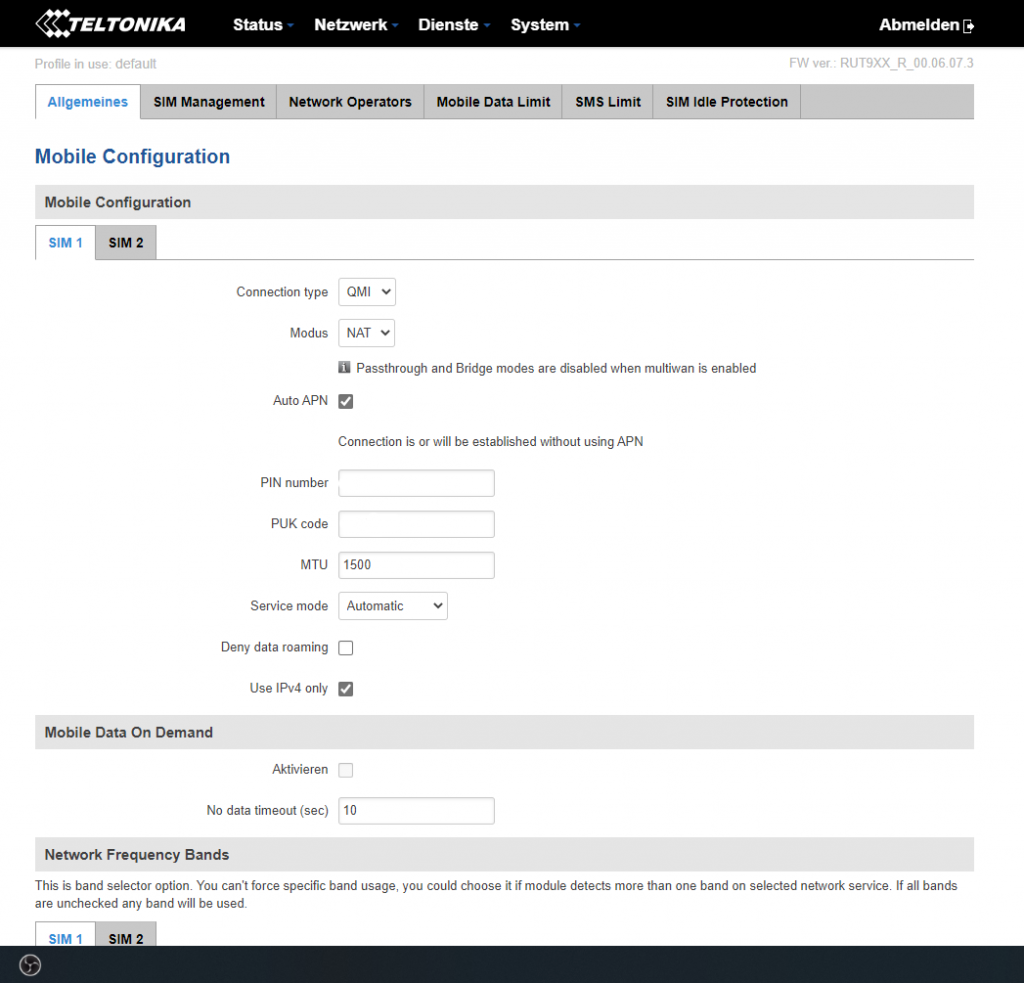
If Internet access is included in the SIM card contract, it is now available. The next step is to create an on-board WLAN, which should of course be protected with WPA2 encryption.
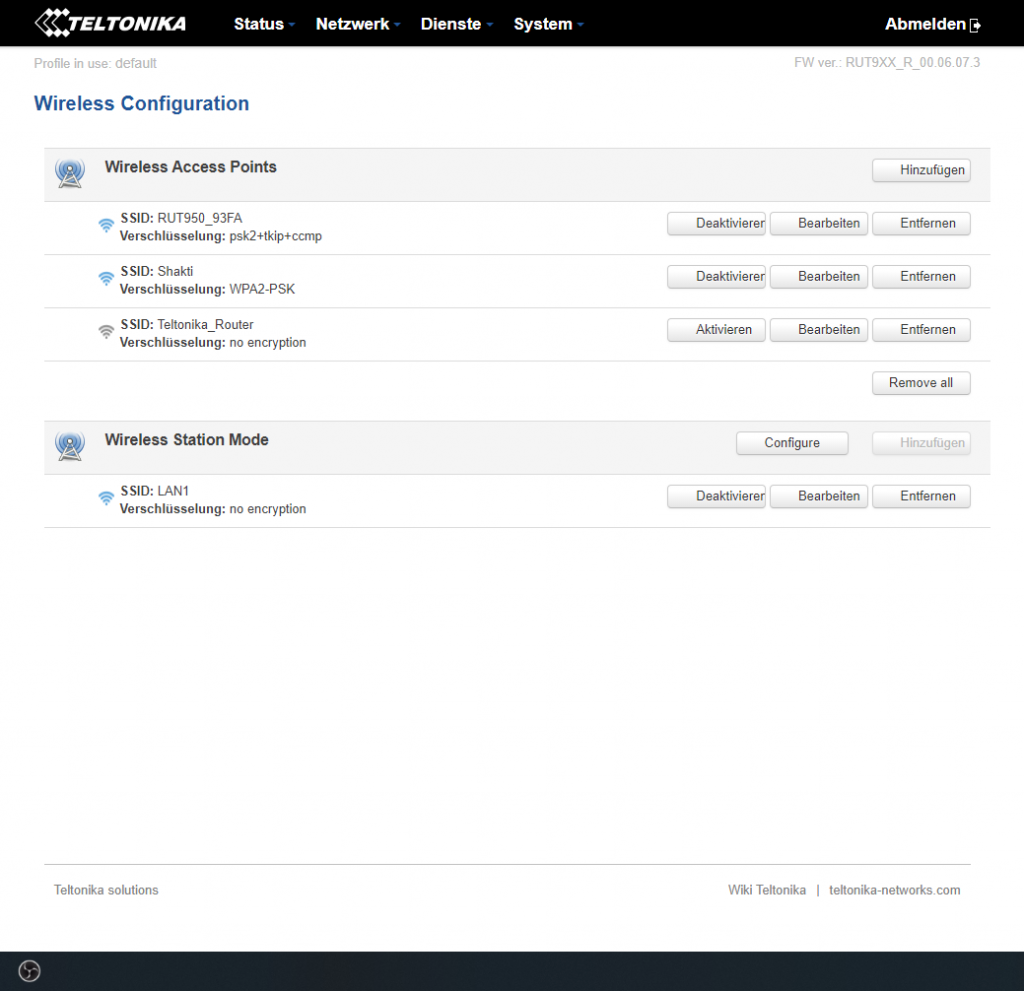
This means that all devices can now be logged into the WLAN and have Internet access via LTE. The administration software can be used to check whether an external port WLAN is accessible.
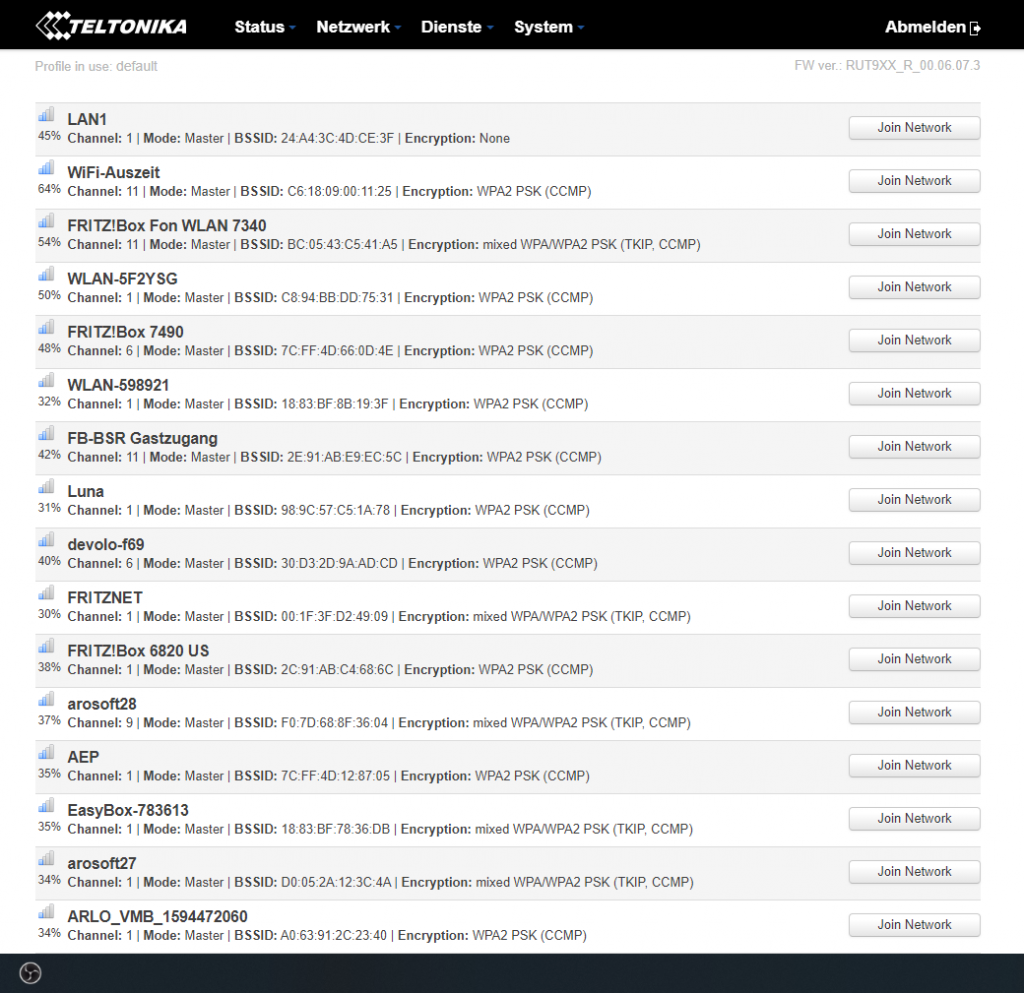
If this is the case, a WAN connection to this external WLAN can be set up, via which the Internet access is then routed as long as this external WLAN is accessible.
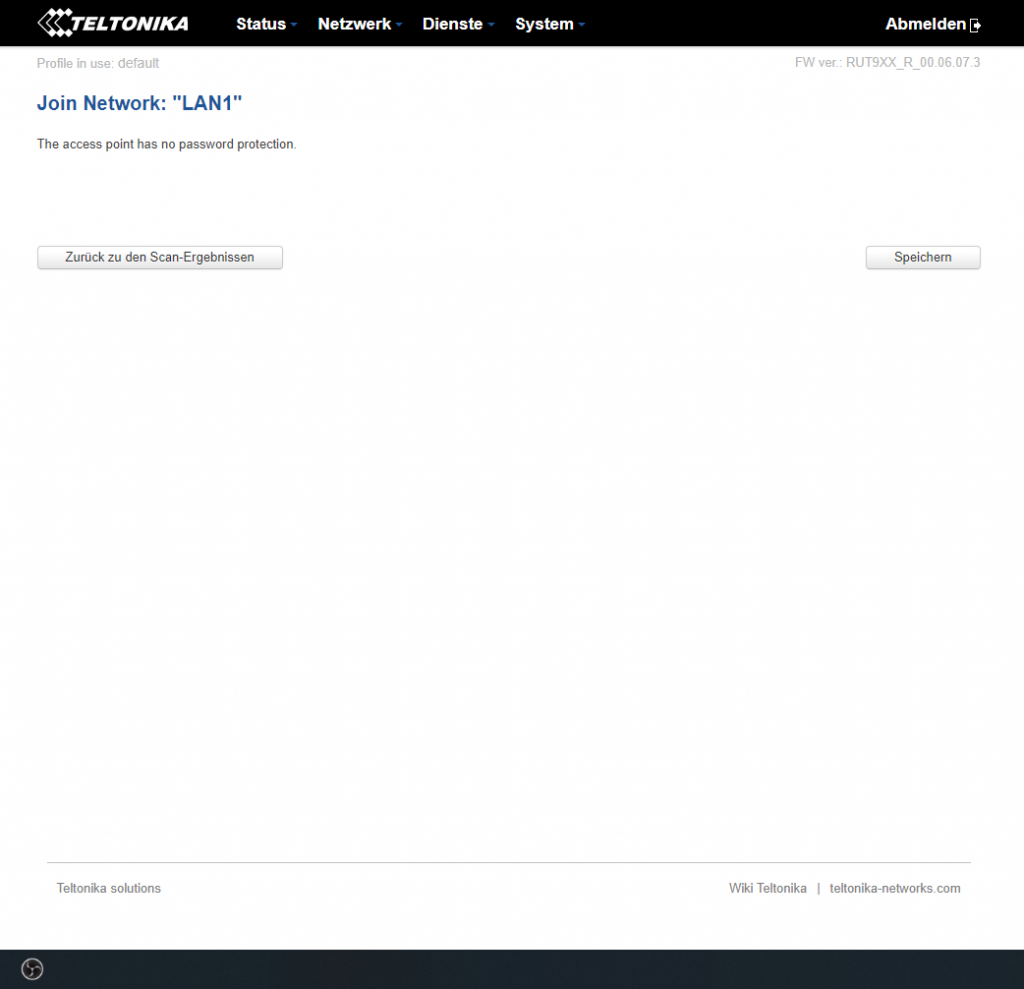
In the special case that a browser-based confirmation of the terms and conditions is required when opening the WAN connection via the external WLAN for the first time, this usually happens the first time a browser accesses the Internet via the WAN connection; all subsequent accesses can then be carried out without any problems.
If the external WLAN is no longer accessible – for example, because you are moving away from the harbour – the automatic failover from WLAN to LTE takes effect, provided it is activated.
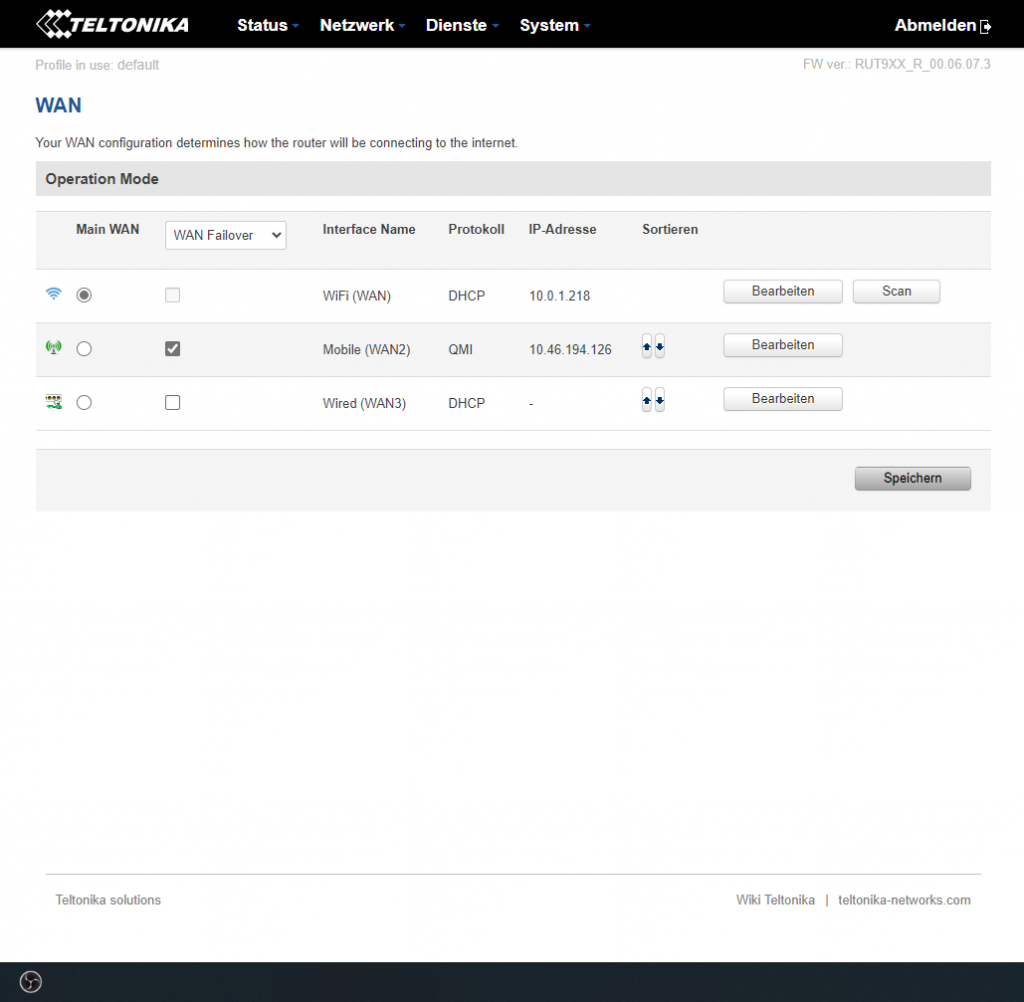
The associated dashboard provides a quick overview of the current status of the connections and access to all settings.
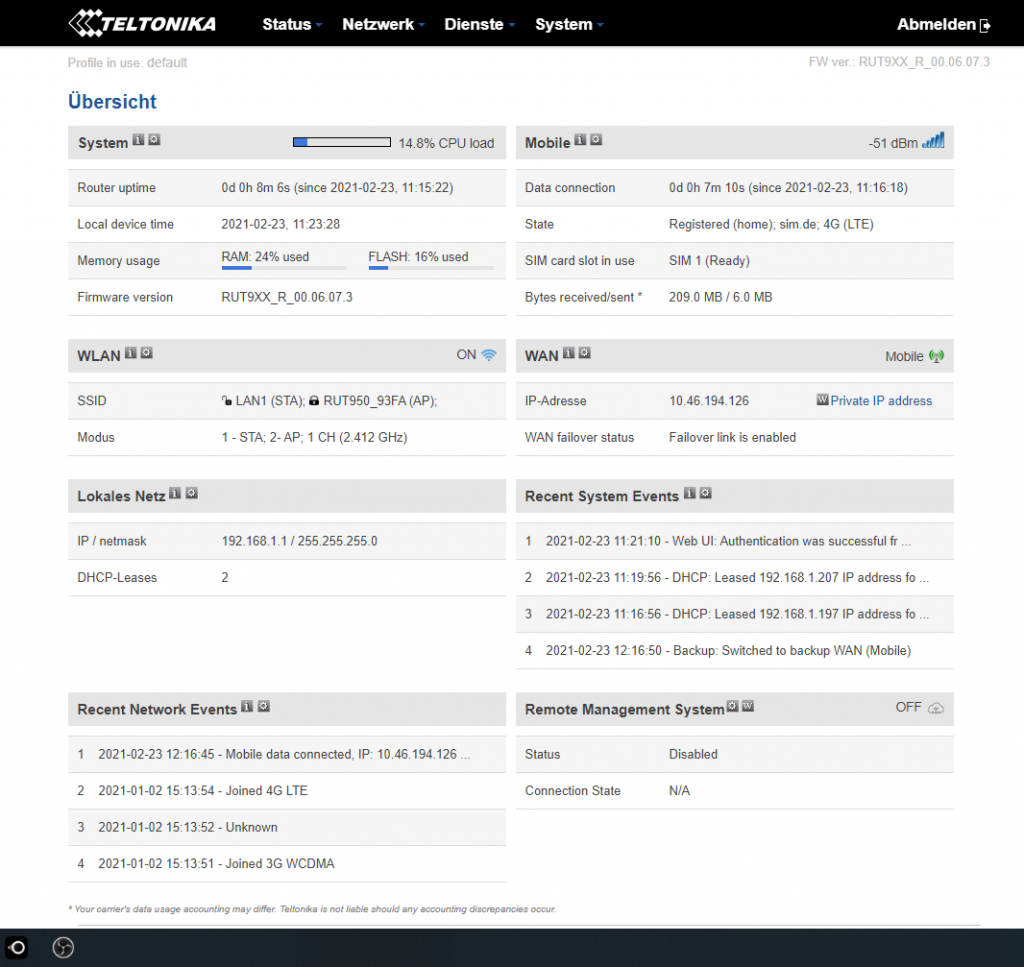
Summary:
In my opinion, this is a nice and easy way to simplify and improve internet access on board for skippers and guests. The external antennas at a height of approx. 4 m significantly improve the range for on-board WLAN and LTE compared to devices that are held in the hand.
It is not a mistake if the fellow sailors on board can keep some of their (internet) habits. This gives them security and lifts the spirits. And if the mood while sailing is good and everyone has their task and can do it with fun, then the mobile phones and other devices stay in the bag or below deck anyway and the analogue world with its challenges and joys comes to the fore.
What I miss is a barcode that guests can simply scan with their devices and log on to the on-board WiFi.
Update on 04.04.2021: Achim, a friendly reader, gave the following helpful hint regarding barcode-based registration: ” … How about your own QR code, which you can easily create individually, print out (or save as a photo on a device) and have all new board members scan with their smartphone camera. You can find QR code generators free of charge on Google, e.g. here: https://www.qrcode-generator.de/ …“. Thank you very much for this hint, Achim. I have tried it and it works perfectly.
2 Responses to Internet on board
Leave a Reply to Alena Cancel reply
This site uses Akismet to reduce spam. Learn how your comment data is processed.
-
Recent Posts
Recent Comments
- Calypsoskipper on Expose Finngulf 39
- Christian on Expose Finngulf 39
- Calypsoskipper on Expose Finngulf 39
- Kenneth Melcher on Expose Finngulf 39
- alex on Saildrive diaphragm – replace according to instructions or just keep?
Kalender
December 2025 M T W T F S S 1 2 3 4 5 6 7 8 9 10 11 12 13 14 15 16 17 18 19 20 21 22 23 24 25 26 27 28 29 30 31 Tags
12 V Verkabelung 12 V wiring Anchor windlass Ankerwinde Biscaya Bora Segel Bretagne Brittany Camaret sur mer circuit distribution Cornwall Cowes Cuxhaven Den Helder Diaphragm English Channel Falkenberg falkenbergs Båtsällskap Falmouth Gezeitensegeln havarie Hydrogenerator Lewmar Ocean Membrane MiniPlex-3USB-N2K Nordsee Norwegen Oxley Parasailor Plymouth Ramsgate Saildrive Saildrive diaphragm Saildrive Membrane SailingGen Seenotrettung Segeln in Tidengewässern Sjöräddnings Sällskapet Skagen Skagerak Stromkreisverteilung tidal navigation tidal water routing Tidennavigation ÄrmelkanalArchiv
Kategorien

Lieber Alex,
danke für diesen Artikel. Ich bin eigentlich sehr skeptisch zum Thema Handy / Internet generell, denn ich denke, heutzutage starren die Menschen mehr auf einen Bildschirn als ein wirkliches Leben zu leben. Deshalb wäre ich auch sehr skeptisch zum Thema Handy am Bord. Aber Ihre Idee hat mir noch ein anderes “point of view” beigebracht …
Es ist kein Fehler, wenn die Mitsegler an Bord einen Teil ihrer (Internet) Gewohnheiten beibehalten können. Das gibt ihnen Sicherheit und hebt die Stimmung. Und wenn die Stimmung beim Segeln gut ist und jeder seine Aufgabe hat und mit Spaß erledigen kann, dann bleiben die Handys und andere Devices ohnehin in der Tasche oder unter Deck und die analoge Welt mit ihren Herausforderungen und Freuden steht im Vordergrund.
Sie haben Recht und ich werde meine Meinung ein bisschen (mindestens im Umfeld Handy und Segeln) korrigieren müssen. Danke!
Allzeit gute Fahrt und immer eine Handbreit Wasser unterm Kiel :)!
Liebe Alena, vielen Dank für den freundlichen Kommentar! Viele Grüße. Alex